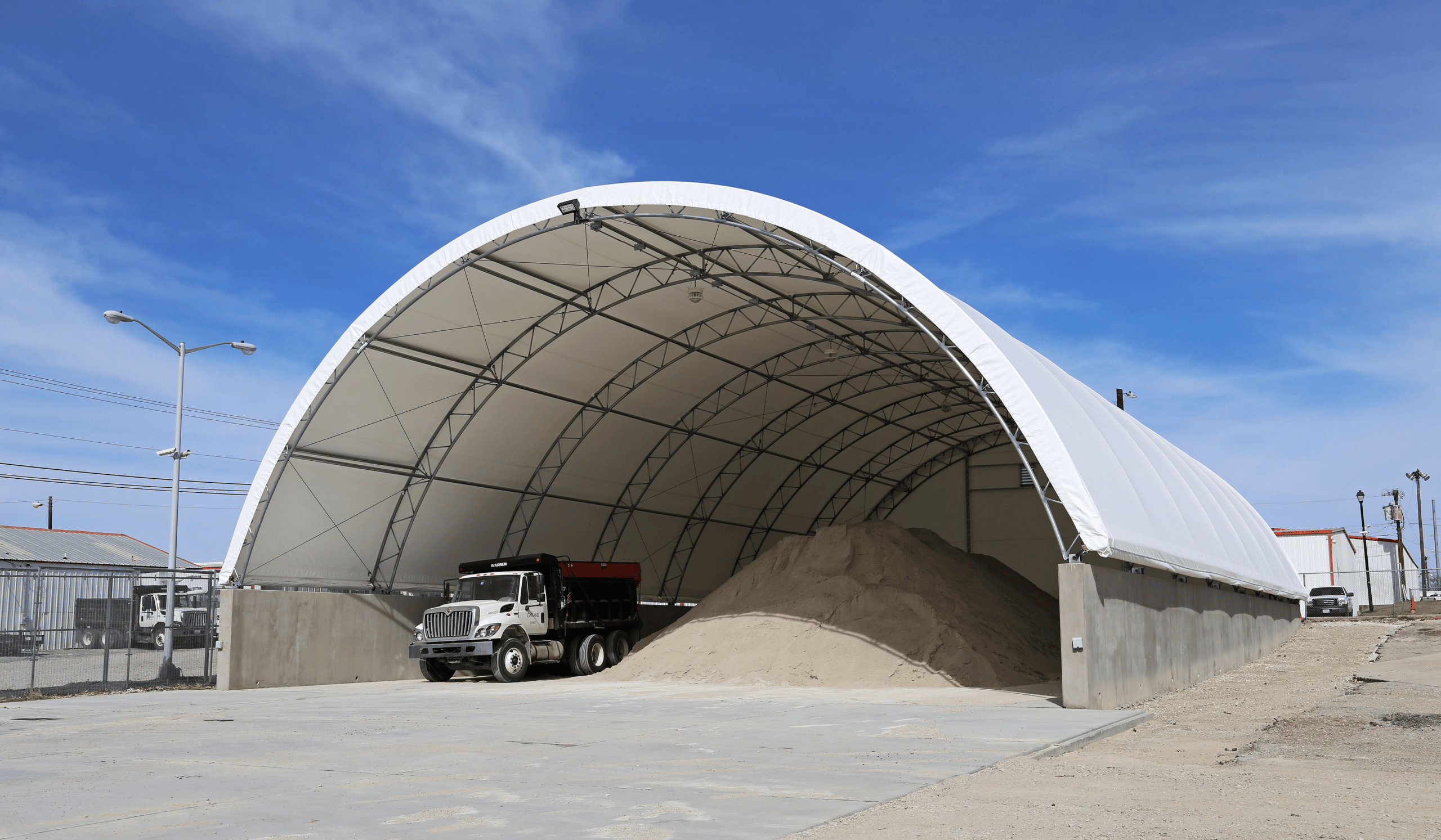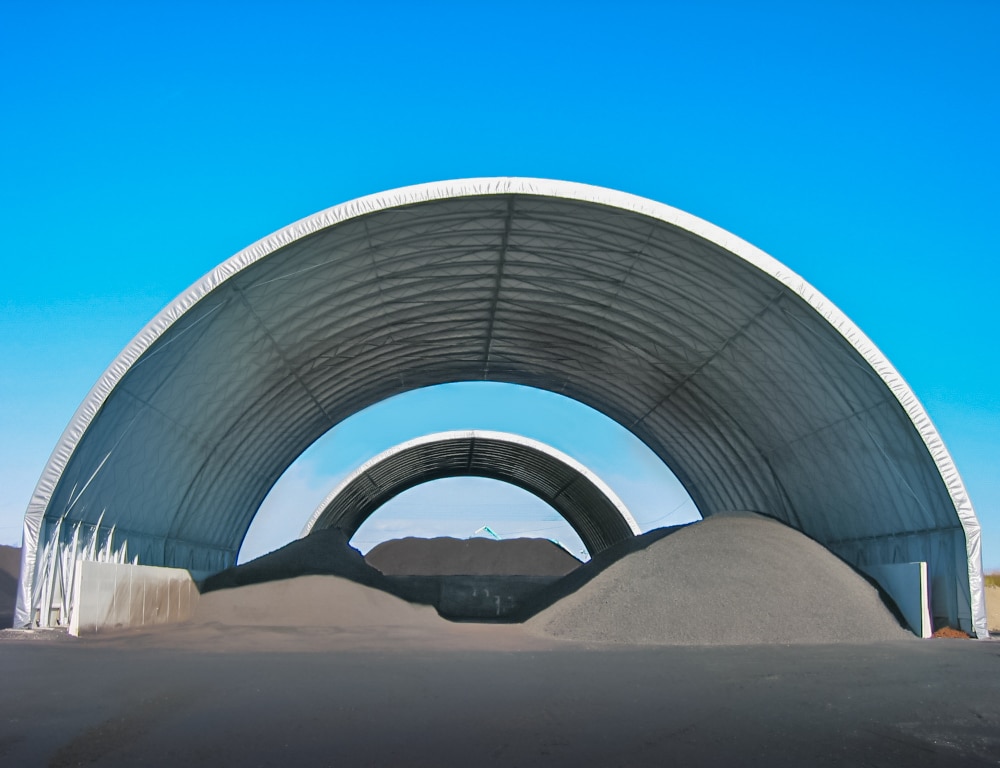The demand for tension fabric buildings has increased yearly due to their versatility and lower upkeep costs. The diverse options to personalize the project and client needs have made it ideal for temporary and permanent structures. Before committing to a tension fabric building, several key points need to be considered. How can you decide if this building type is right for your project?
The Main Purpose Of The Space
When your project is in the planning phase, you will be giving a great thought to the purpose of the space and the components you’ll need: windows, doors, accessibility, light, air and more. You will have thought about whether the space will be used more for people or to store items, and how large the space needs to be. Fabric structures often create a more inviting space, allowing natural light to penetrate the fabric. This makes them ideal for housing large groups of people and creating workspaces or space for sports activities.
Fabric structures also make great storage facilities as they promote ventilation for feed in agricultural industries. Their versatility in size also means they are perfect for housing large-scale machinery and farm equipment.
The Foundation
Fabric structures are unique in the sense that they can be erected for temporary or permanent use. The foundation is developed based on the needs, whether short-term or long-term. Short-term foundations cost less, but they typically don’t last as long. Temporary foundations cannot be built on a very large scale, they are more suited to smaller spaces. Temporary foundations are installed and removed easily, with little to no traces left behind afterwards.
If you require large space permanently, tension fabric buildings will definitely be a winner. This will enable you to customize sizing with more freedom and ensure the longevity of the building. Permanent foundations require a lengthier installation process with the help of heavy machinery, a factor that needs to be considered when deciding on the type of structure you want.
Energy Efficiency
As the world focuses more on energy efficiency and environmental footprint, these considerations have become the heart of many new structures and projects. Project developers are looking for energy-efficient solutions that will help combat climate change and keep their usage and emissions at a minimum. Tension fabric buildings have become known for their low upkeep, natural light and ventilation, and lower-than-normal setup costs. All of these factors help to keep the environmental footprint as small as possible.
The fact that fabric structures can be moved and customized to maximize space with the lowest possible setup cost has changed the industry in a new thought direction. Buildings that can be taken down after use – instead of brick and mortar standing abandoned and wasting money, space and natural habitat – have been an incentive for many consumers. If you are passionate about environmental issues as well as saving money during setup, upkeep and takedown, tension fabric buildings are definitely the top choice.
The Maintenance Headache
Typical metal, brick and steel buildings often require intensive and expensive upkeep. The maintenance of fabric structures is relatively low, and if the need arises for a repair it is very easy to implement – and more affordable. Structures can be recovered when the need arises in a process that is quick and minimally disruptive.
Paperwork and Permits – What You Need to Know
Every city will have their own regulations and it is important to research these before attempting to erect a fabric building. The International Building Code (IBC) includes provisions for fabric structures in Chapter 31-Special Construction. Keeping these requirements in mind, the size, location and use of the building will determine whether a permit will be required.
In many cases, most cities do not require fabric buildings to obtain a permit, making it a convenient choice for many projects. Always liaise with experts to help determine which permits need to be in place to ensure you do not run into any trouble late into the project, risking its success.
With their years of experience, Skyler Structures has gained knowledge on each aspect of the tension fabric building process. We can assist clients with determining their needs and whether a fabric building suits their needs. We place our client’s needs at the heart of our process and believe in delivering quality structures time and time again. If you have considered the aspects of tension fabric buildings and wish to obtain a quote or speak to an expert, don’t hesitate to visit our website for more information.

